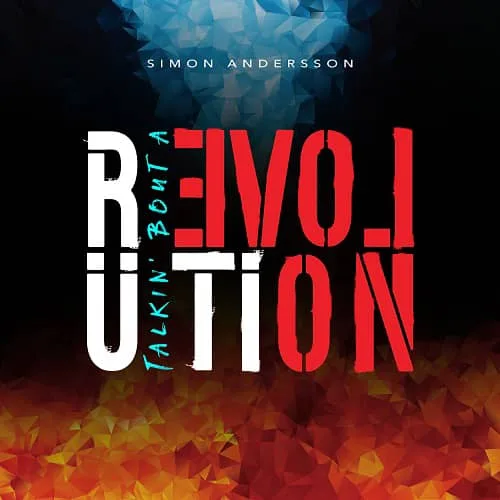“Washed Up” by The Cocoons is a song that thrives in the delicate space between melancholy and groove, managing to capture both in equal measure without leaning too heavily into one. From the opening moments it becomes clear that this is not simply a sad reflection set to music, nor is it a carefree rhythmic track. Instead, the band crafts a sound that feels reflective yet alive, meditative yet driven. The atmosphere carries a weight of longing, as though the lyrics are written from a place of deep emotional honesty, but this weight is carried on instrumentation that refuses to sit still. This balance creates a tension that feels almost paradoxical but ultimately becomes the song’s greatest strength. It allows the listener to sit with feelings of loss or fatigue while still being carried along by the steady pull of rhythm, as though the music itself refuses to let them sink completely into despair.
The rhythmic foundation is what makes “Washed Up” stand out within its emotional framework. Instead of allowing its melancholy to dominate the arrangement, The Cocoons ground the track with a groove that has an understated but undeniable sway. The bass and percussion work together to build a pocket that feels steady and supportive, never overpowering yet always present, guiding the listener forward. What makes this so effective is the way the groove contrasts with the lyrical and vocal mood, creating a dual experience of heaviness and motion. This is music that acknowledges sadness but insists on carrying it forward, transforming stillness into momentum. The groove doesn’t trivialize the melancholy but rather gives it shape, making the song not just something to feel but something to move with. That interplay between weight and motion keeps the track engaging and gives it a timeless quality, the kind of song that could resonate equally in solitude or in a shared listening space.
The vocal performance takes the song’s emotional depth to another level, serving as the heart around which everything else revolves. Delivered with subtlety rather than dramatic intensity, the vocals lean into intimacy, making the listener feel as though they are being spoken to directly. Small inflections, breathy textures, and moments of restraint are not accidents but conscious artistic choices that heighten the honesty of the performance. Rather than overwhelming the listener with vocal power, the singer chooses to draw them in, letting every line feel personal and vulnerable. This creates a powerful contrast with the groove beneath, as the steady rhythm acts like a heartbeat supporting a voice that often feels on the edge of breaking. The result is a vocal delivery that lingers long after the song ends, carrying with it the raw truth of the emotion behind the words.
Lyrically the song works through implication and imagery, giving the listener enough to feel deeply while leaving space for their own interpretation. The title alone, “Washed Up,” conjures a sense of being discarded or worn out, like something the tide has carried to shore, no longer in its prime but still bearing traces of a history. This imagery serves as a metaphor for emotional exhaustion, missed opportunities, or the weight of expectation, but the way it is framed in the song avoids being heavy-handed. Rather than relying on clichés, the lyrics hint at inner states through carefully chosen phrasing and a tone that feels contemplative rather than resigned. The ambiguity of its message is one of its greatest strengths, as it allows each listener to hear their own story reflected back at them. Whether interpreted as a song about personal fatigue, relational loss, or even creative struggle, it carries a universality that makes it broadly relatable while still maintaining individuality.
Production choices throughout “Washed Up” support its dual emotional nature with remarkable precision. The mix emphasizes warmth and clarity, ensuring that no single element overshadows the others, and this balance makes the track feel cohesive from start to finish. The vocals are placed forward enough to capture attention, while the instrumentation fills the surrounding space in a way that feels organic and natural. Reverb and subtle delay are used sparingly to give atmosphere without drowning the intimacy of the performance, and the instrumentation layers are carefully balanced to complement rather than compete. The bass and percussion anchor the mix, while guitars or keys weave in textures that expand the emotional palette. These choices allow the song to breathe and resonate, reflecting its lyrical themes through its sonic design. The production is not flashy, but its restraint is exactly what makes it powerful, as it enhances the song’s honesty rather than distracting from it.
In the end, “Washed Up” is a song that stays with the listener because of how it holds contrasting emotions in harmony. It acknowledges sadness and weariness but refuses to present them as final or immovable. Instead, it lets rhythm carry the weight of melancholy forward, creating a track that feels equally suited to moments of reflection and moments of release. This is what gives the song such wide emotional resonance: it is both deeply personal and quietly universal. The Cocoons demonstrate a keen understanding of how to build songs that feel honest without being heavy-handed and engaging without being shallow. “Washed Up” is more than just another melancholic track; it is a reminder that even in the midst of heaviness there can be movement, and that music can both reflect pain and gently guide it toward healing.
For more information about The Cocoons, click on the icons below.



